Untitled (from the series Weak Force), 2016
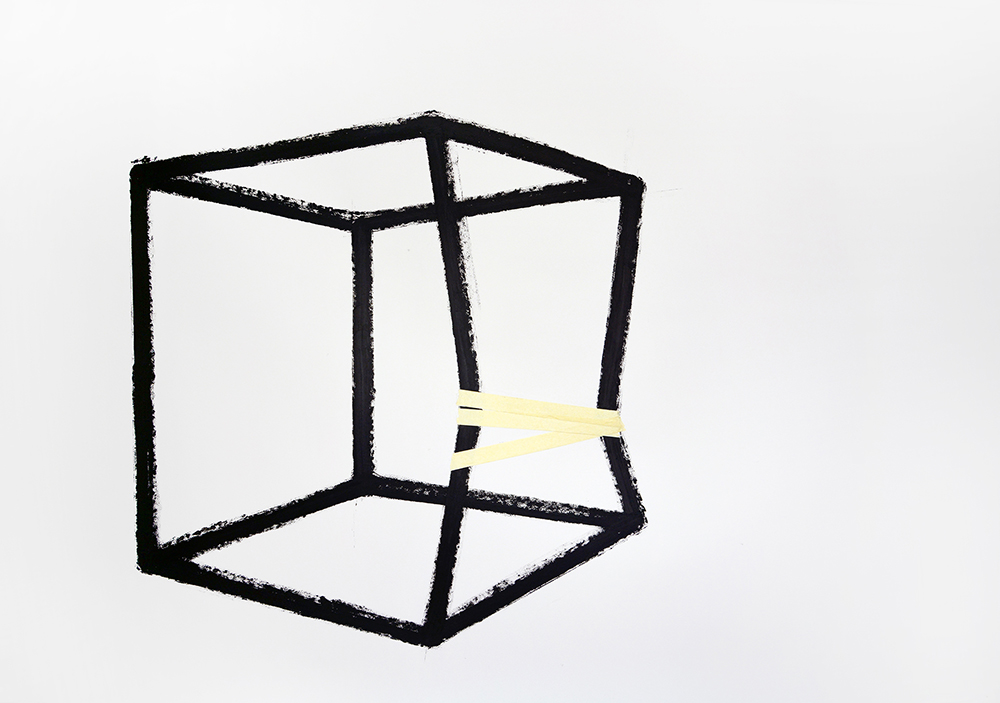
Untitled (from the series Weak Force), 2016
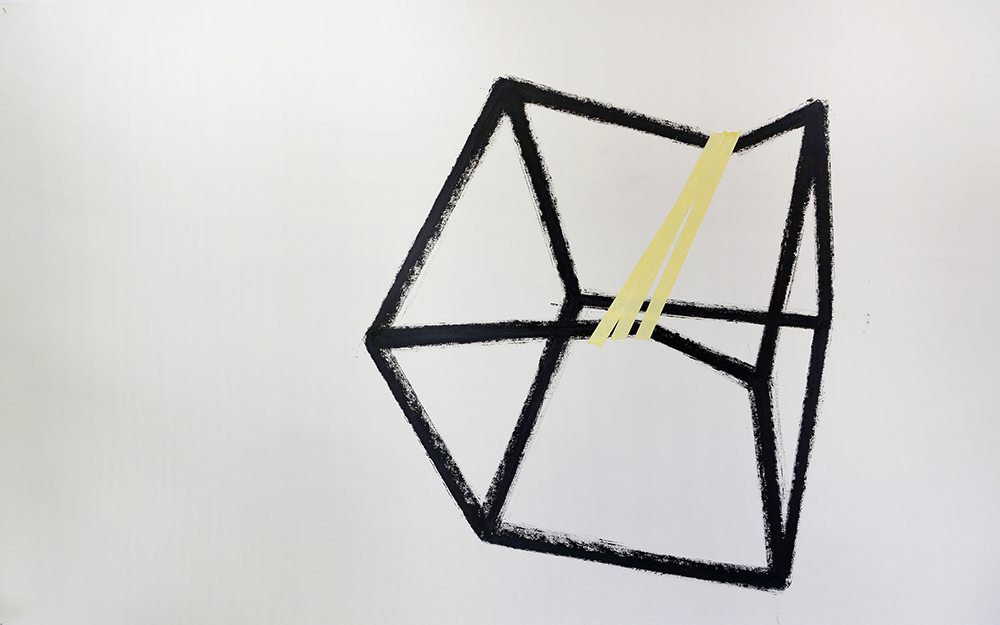
Tape Space II, 2016

Tape Space III, 2016

Tape Space IV, 2016

Longing II, 2016
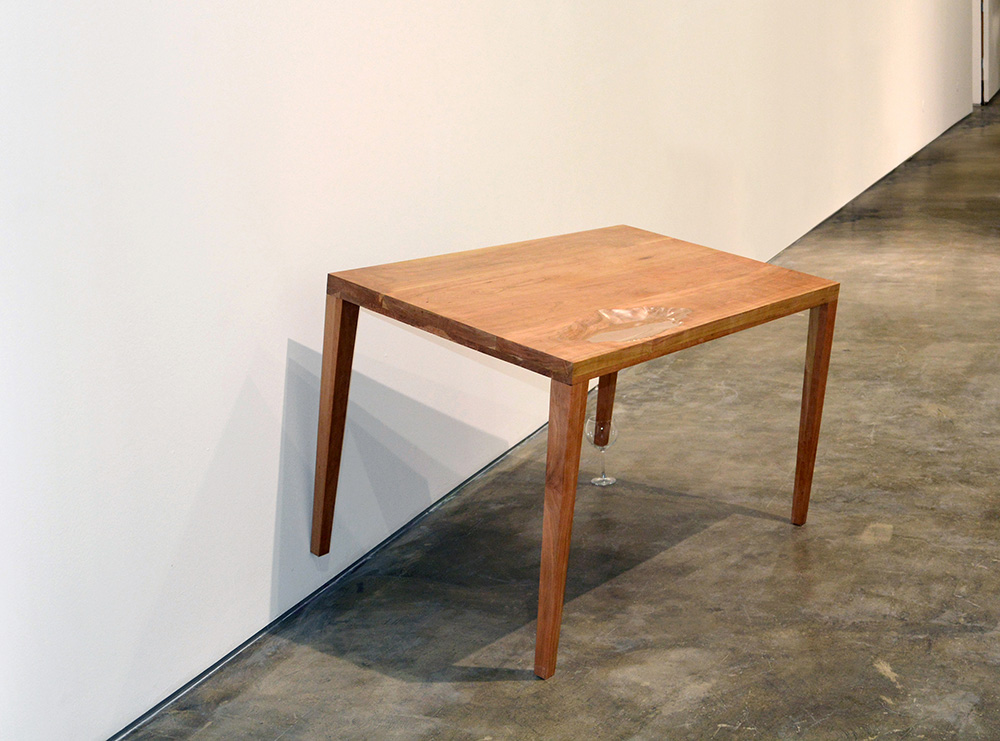
A concave deformation on the top of a table is full of water. The table inclines with intention to pour the water from it. One leg rests on the wall. Another one is in a glass that, instead of collecting the drips, carries even more the imbalance that makes it eminent to drop down the water. The piece remains in a prolonged limbo delaying the wait and, even static, we know that each element contributes to the tension that keeps the piece stable.
Kitanda #3, 2018-19
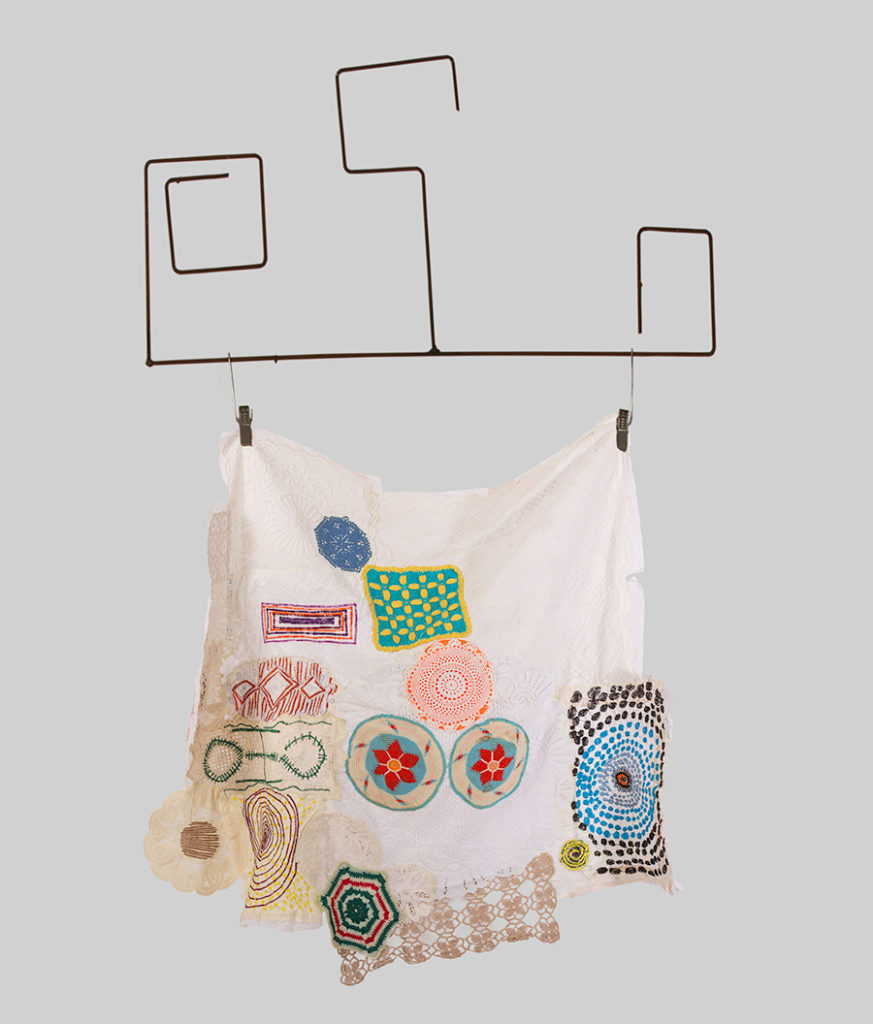
This work denounces the excessive consumption and waste of the fashion industry. Plastic bags form the basis of it, the same used to transport clothes donated to Africa; the bags were gathered by the artist in the African markets. Drawn on them is an image from the artist’s own memory—disadvantaged children wear the clothes she herself has donated in remote villages. The excess of developed countries, therefore, ends up in the hands of others thanks to the artist. The clothes then take on a new life, becoming fashion statements with a political edge.
Kitanda #2, 2018-19
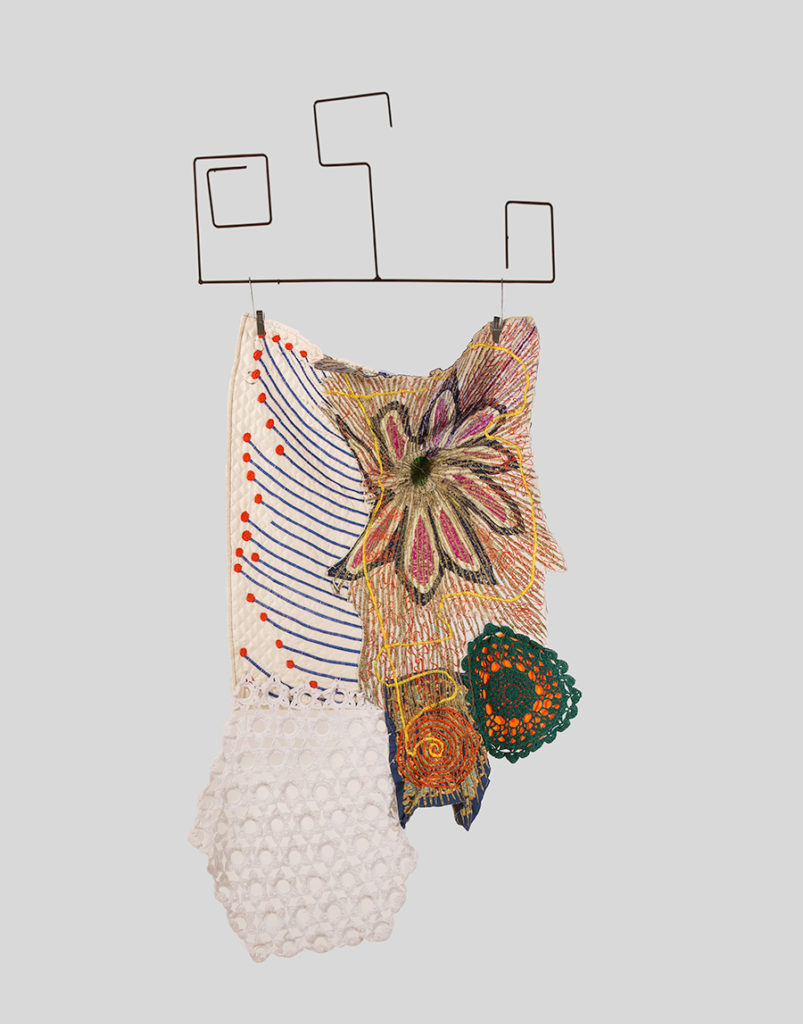
This work denounces the excessive consumption and waste of the fashion industry. Plastic bags form the basis of it, the same used to transport clothes donated to Africa; the bags were gathered by the artist in the African markets. Drawn on them is an image from the artist’s own memory—disadvantaged children wear the clothes she herself has donated in remote villages. The excess of developed countries, therefore, ends up in the hands of others thanks to the artist. The clothes then take on a new life, becoming fashion statements with a political edge.
Kitanda #1, 2018-19
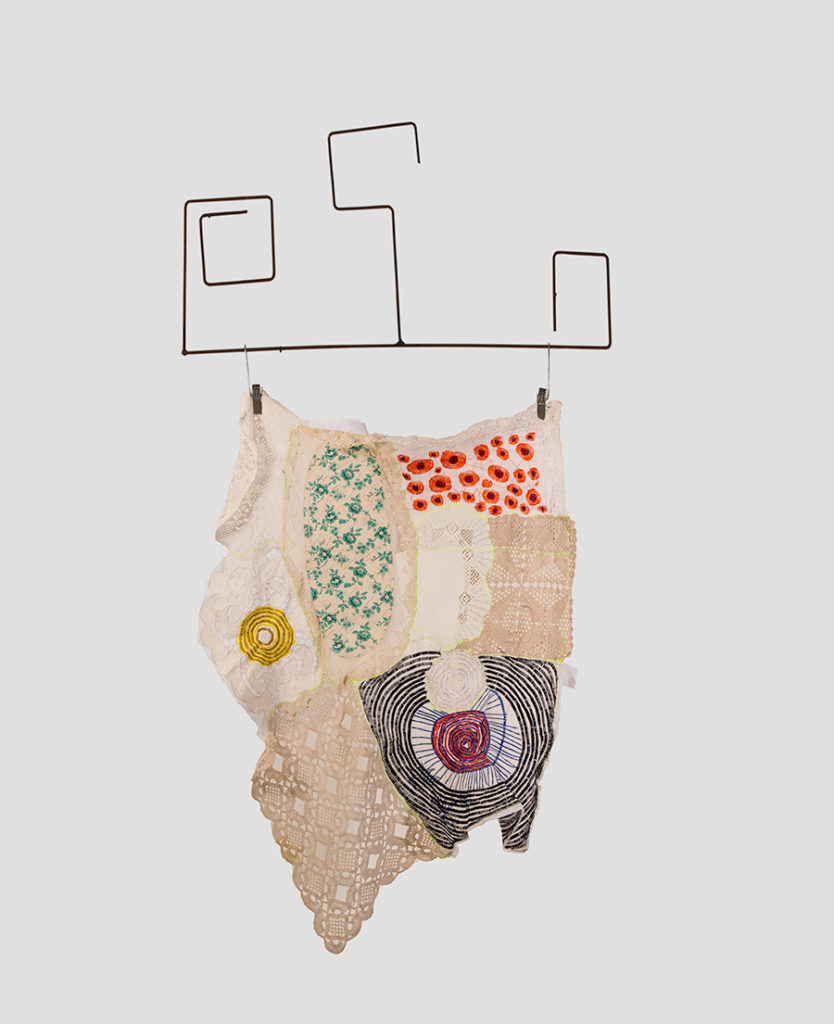
This work denounces the excessive consumption and waste of the fashion industry. Plastic bags form the basis of it, the same used to transport clothes donated to Africa; the bags were gathered by the artist in the African markets. Drawn on them is an image from the artist’s own memory—disadvantaged children wear the clothes she herself has donated in remote villages. The excess of developed countries, therefore, ends up in the hands of others thanks to the artist. The clothes then take on a new life, becoming fashion statements with a political edge.
Fernão V. Poko, Tipo Passe, 2019
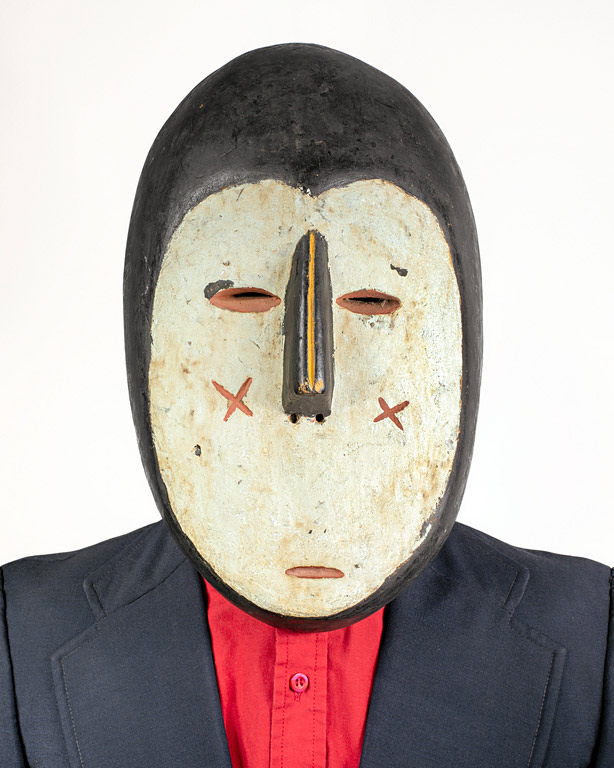
For his series “Tipo Passe“, Edson Chagas used a variety of traditional Bantu masks. In contrast to the usual museal-taxonomic staging as sculptural artefacts, Chagas had actual models wear the African masks, thus bringing them back to their original performative use in cultural-spiritual life.
The artist works with clear decontextualisations. Detached from their historical background and transferred to the present by people in modern dress, they collide with prevailing positioning strategies. Formally, the series “Tipo Passe” (passport) is specifically oriented towards the presentation of a neutral passport. In content, however, the individuality of the wearer of the mask is concealed. The mask becomes part of the identity to be questioned, linked to historical lineage and characterised by social attributions of a supposedly “typical African” stereotype.
